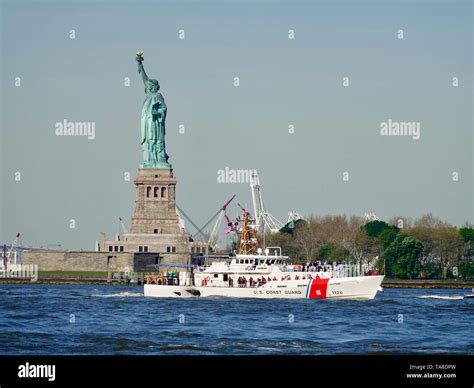
Coast Guard Reverses Hate Symbols Policy
Coast Guard Reverses Controversial Policy on Hate Symbols
In a swift reversal following intense public backlash, the U.S. Coast Guard has reinstated swastikas and nooses as prohibited hate symbols, abandoning a policy that critics called a dangerous downplay of racism and antisemitism.
The Controversial Policy Change
Last week, the Coast Guard announced a policy update set to take effect in December that reclassified swastikas and nooses from "hate symbols" to merely "potentially divisive" imagery. The change replaced previous language from 2023 that explicitly stated displaying such symbols "constitutes a potential hate incident."
This decision sparked immediate outrage. Swastikas—the emblem of Nazi Germany responsible for the Holocaust and the deaths of millions of Jews—and nooses—symbols of racial terror and lynching in the United States—have deep historical significance and violent connotations. Critics argued the policy minimized the gravity of these symbols and betrayed the sacrifices of over 400,000 U.S. troops who fought against fascism in World War II, including 1,900 Coast Guard members.
National Outcry and Political Response
The backlash was swift and widespread. Major news outlets reported the story, and public comments flooded with disbelief and condemnation. Lawmakers, including Rep. Lauren Underwood (D-Ill.), met with Coast Guard leadership to express concerns.
"He came by the office and assured us that there is an across-the-board prohibition on hate symbols, including swastikas and nooses," Underwood said in a video statement after meeting with Acting Commandant Admiral Kevin Lunday.
Department of Homeland Security officials also faced scrutiny, though they denied initiating the policy change before the Coast Guard's reversal.
The Rapid Reversal
Just days after the initial policy change was reported, the Coast Guard issued a new memo on November 21, 2025. This directive explicitly prohibits displaying swastikas, nooses, and "any symbols or flags co-opted or adopted by hate-based groups as representations of supremacy, racial or religious intolerance, anti-semitism, or any other improper bias."
Admiral Lunday emphasized that extremist imagery "violate our core values and are treated with the seriousness they warrant under current policy." He added that any display would be "thoroughly investigated and severely punished."
Context and Ongoing Challenges
The incident highlights persistent challenges within the U.S. military regarding extremism. A 2020 Pentagon report acknowledged the urgency of addressing extremist views in the ranks, noting the potential for "high-impact events" by individuals with military training. While recent Defense Secretary Pete Hegseth has dismissed concerns about systemic extremism, this policy reversal underscores the need for vigilance.
"The 2025 policy is not changing—USCG issued a lawful order that doubles down on our *current* policies prohibiting the display, distribution or use of hate symbols by Coast Guard personnel," DHS spokesperson Tricia McLaughlin stated, defending the reversal.
What This Means for the Future
The Coast Guard's rapid reversal demonstrates the power of public accountability in shaping military policy. However, the incident also raises questions about internal processes and ideological influences within the branch. As the military continues to grapple with extremism, clear, unambiguous policies against hate symbols remain essential to maintaining integrity and public trust.

Additional Resources:
Share this article
Alex Green
Lifestyle blogger covering modern living, personal growth, and cultural trends.